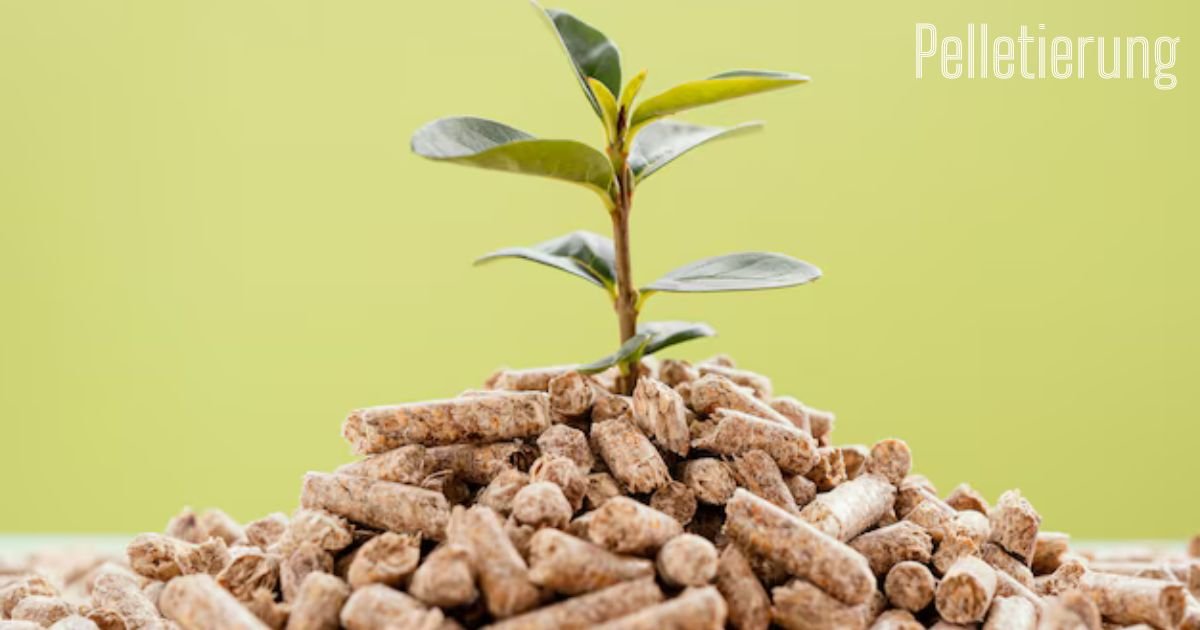Pelletierung, or pelletizing, is a transformative process used across various industries to convert fine, powdery materials into small, solid pellets. This method has gained immense popularity due to its efficiency in handling materials, reducing dust, and improving the flowability of substances. Whether it’s in agriculture, energy production, or manufacturing, pelletizing offers significant advantages that go beyond just shaping materials. Let’s explore the world of pelletizing and understand its benefits, applications, and the key steps involved.
Understanding Pelletierung
Pelletierung is essentially the process of compressing or molding fine particles into uniform, compact shapes—usually pellets. These pellets are easy to handle, transport, and store. The process typically involves raw material preparation, agglomeration, and drying, ensuring that the final product meets specific size, shape, and quality requirements. The materials used in pelletizing can range from organic waste, such as sawdust or agricultural residues, to industrial chemicals, minerals, and even food products. This versatility makes pelletizing an essential technology in various sectors.
The Importance of Pelletizing in Modern Industries
Pelletizing is more than just a method of shaping materials. It addresses practical concerns like reducing dust, improving material handling, and enhancing transportation efficiency. Industries such as agriculture, manufacturing, and energy production have significantly benefited from pelletizing techniques, which provide both environmental and economic advantages.
For example, in the biomass industry, pelletizing turns waste materials like wood chips into fuel pellets. These pellets burn efficiently and produce less ash, making them a cleaner energy source. Similarly, in agriculture, feed pellets improve the nutrient distribution for livestock, ensuring they receive balanced nourishment with each meal.
Steps Involved in the Pelletizing Process
Pelletierung involves several key steps, each crucial to achieving a high-quality final product. Here’s a breakdown of the process:
Raw Material Preparation
The first step in pelletizing is preparing the raw material. This typically involves grinding or pulverizing the material into fine particles. For example, wood needs to be chipped and ground into sawdust before it can be pelletized. Proper preparation ensures the material is of uniform size, which is vital for creating consistent pellets.
Moisture Control
Moisture content plays a critical role in the pelletizing process. If the material is too dry, it won’t bind properly, and if it’s too wet, the pellets will fall apart. Therefore, achieving the correct moisture level is essential for producing durable and stable pellets.
Pelletizing (Agglomeration)
This is the core of the pelletizing process. The prepared material is fed into a pellet mill, where it is compressed and forced through a die with holes of specific sizes. The pressure and heat generated during this step help the particles bind together to form solid pellets. The size and shape of the pellets can be adjusted based on the die and processing conditions.
Cooling and Drying
After the pellets are formed, they need to be cooled and dried to remove any excess moisture. This step ensures that the pellets retain their shape and durability during transportation and storage. Proper drying is essential to prevent the pellets from crumbling or disintegrating over time.
Screening and Packaging
Once the pellets are cooled, they go through a screening process to remove any fine particles or broken pieces. The final, uniform pellets are then packaged for distribution.
Benefits of Pelletizing
Pelletierung offers numerous benefits across different industries. Some of the key advantages include:
Improved Material Handling
Pellets are easier to handle and transport than loose powder or fine particles. Their compact and uniform shape reduces dust, which improves working conditions and minimizes material loss during transport.
Enhanced Storage Efficiency
Pellets take up less space compared to raw materials in their original form. This makes storage more efficient, as they can be stacked and stored in bulk without significant space concerns.
Environmental Benefits
In industries like biomass energy, pelletizing helps in converting waste materials into valuable products. For example, wood pellets made from sawdust reduce the need for fossil fuels and produce lower emissions, contributing to a cleaner environment.
Consistency in Product Quality
Pelletizing ensures that each pellet has a consistent size, shape, and composition, which is important for applications like animal feed and chemical processing. Uniform pellets improve the efficiency of the end-use process and provide predictable results.
Applications of Pelletizing
Pelletierung has a wide range of applications across various sectors. Some of the most common uses include:
Biomass Energy Production
One of the most well-known applications of pelletizing is in the biomass energy sector. Wood pellets, made from sawdust or other wood waste, are used as a renewable energy source. These pellets burn cleanly, with fewer emissions than traditional fuels, making them a popular choice for heating and power generation.
Animal Feed Production
In agriculture, pelletized animal feed offers several benefits, including improved nutrient distribution and ease of handling. Livestock feed pellets ensure that animals receive a balanced diet, and their uniform shape reduces waste during feeding.
Chemical and Fertilizer Production
Pelletizing is also used in the chemical and fertilizer industries to create uniform, dust-free products. This improves the efficiency of chemical reactions and ensures precise application in agricultural settings.
Food Processing
In the food industry, pelletizing is used to create products like breakfast cereals or snacks. The uniform shape and size of the pellets improve packaging and cooking efficiency.
Challenges in Pelletizing
While pelletizing offers numerous benefits, it is not without its challenges. One of the primary issues is maintaining the right balance between moisture content and binding agents. If these factors are not properly controlled, the pellets can either become too brittle or too soft, leading to quality issues. Additionally, the wear and tear on pelletizing equipment, such as dies and rollers, can lead to maintenance challenges. Ensuring that the machinery is properly maintained and operated is crucial for maintaining production efficiency.
Future Trends in Pelletizing
The future of pelletizing looks promising, with advancements in technology improving the efficiency and sustainability of the process. Innovations in material science are enabling the use of a broader range of raw materials, including biodegradable and recycled substances. Furthermore, as industries continue to focus on sustainability, the demand for pelletized products, particularly in the energy and agricultural sectors, is expected to grow. Pelletizing offers a way to convert waste into valuable products, aligning with global efforts to reduce environmental impact.
Conclusion
Pelletierung is a versatile and valuable process that plays a crucial role in various industries, from energy production to agriculture. By converting fine materials into compact, uniform pellets, this technology improves material handling, enhances storage efficiency, and contributes to environmental sustainability. As industries continue to evolve, the importance of pelletizing will only increase, making it an essential tool for future growth.
FAQs
What materials can be pelletized?
Pelletizing can be used for a wide range of materials, including wood, biomass, chemicals, minerals, and even food products.
What are the benefits of wood pellets for energy?
Wood pellets burn efficiently and produce fewer emissions than traditional fossil fuels, making them a cleaner, renewable energy source.
How does moisture content affect pelletizing?
Proper moisture control is essential for producing durable pellets. Too much moisture makes the pellets soft, while too little moisture prevents binding.
Can pelletizing be used in food production?
Yes, pelletizing is commonly used in the food industry to create products like breakfast cereals and snacks, improving packaging and cooking efficiency.
What industries benefit most from pelletizing?
The biomass energy, agriculture, chemical, and food processing industries all benefit significantly from pelletizing technology.











